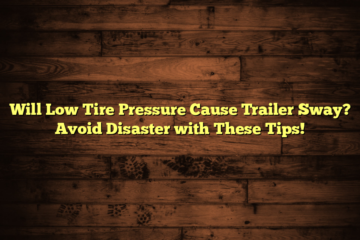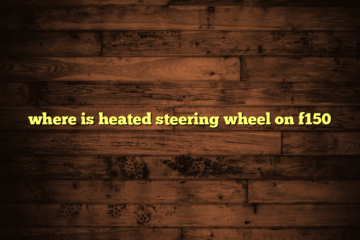Eliminating Wheel Wobble After Bearing Replacement: Expert Tips
Wheel wobble after bearing replacement can be caused by various factors such as improper installation or worn out parts. In this article, we’ll discuss the possible causes and solutions for wheel wobble after bearing replacement to help you diagnose and fix the issue.
Whether you’re a professional mechanic or a diy enthusiast, this guide will provide you with the necessary information to get your vehicle back in top condition. So let’s dive in and find out what’s causing your wheel wobble!
Understanding The Causes Of Wheel Wobble After Bearing Replacement
Wheel wobble after bearing replacement can be frustrating, but there are several common culprits to consider. Improper installation, misalignment, and uneven rotor thickness are all possible reasons for the issue. Improper installation, for example, can result in a bearing that’s too loose, causing the wheel to wobble.
Misalignment, on the other hand, can cause the wheel to become unstable and wobble. Uneven rotor thickness can also contribute to wheel wobble. Signs to look out for include vibrations and inconsistencies in the steering. If you experience wheel wobble after bearing replacement, consider these potential causes and have a professional mechanic check your vehicle.
Importance Of Proper Bearing Installation
Proper bearing installation is crucial to avoid wheel wobble. Improper installation brings dire consequences like more significant component failures. Torque and pre-loading play vital roles in ensuring right installation. It’s always best to use quality replacement parts to avoid further complications.
Choosing the right mechanic is crucial, too. It’s essential to find someone who has expertise in the field and guarantees quality work.
How To Identify Wheel Wobble After Bearing Replacement
Wheel wobble after bearing replacement can be alarming but it’s normal to experience it initially. You can identify the issue through visual inspections and road testing. Check for any loose or damaged parts. Measure lateral and radial runout to pinpoint the issue.
Pay attention to any vibrations or noises while driving. It could mean that the new bearing wasn’t installed correctly or there are other issues affecting your car’s performance. Being aware of these steps will help you detect and solve the problem quickly.
Steps To Eliminate Wheel Wobble After Bearing Replacement
Eliminating wheel wobble after bearing replacement requires several proper steps. Firstly, ensuring the bearing was installed correctly is crucial. Secondly, wheel alignment needs to be perfect, lest you risk wobbling. Balancing the wheels is also important in avoiding wobble. Lastly, checking rotor thickness ensures even braking pressure.
With these steps taken, you can enjoy a smooth ride without any wobbling.
Frequently Asked Questions On Wheel Wobble After Bearing Replaced
Why Does My Wheel Still Wobble After Bearing Replacement?
A wheel wobbling after bearing replacement can be due to unbalanced wheels, damaged hub, or misaligned axles.
Can A Bad Bearing Cause Wheel Wobble Even After Replacement?
Yes, bad bearings can cause wheel wobble even after replacement if there is further damage to the suspension system.
How Do I Fix Wheel Wobble After Bearing Replacement?
Fixing wheel wobble after bearing replacement involves checking and correcting wheel balance, assessing the hub for damage, and aligning the axles.
Conclusion
With wheel wobbles being a common concern for drivers, it’s natural to assume that replacing the bearings will instantly solve the issue. However, that’s not always the case. A wobbly wheel can be caused by a range of factors, such as uneven tire wear or suspension problems.
If the wheel continues to wobble even after bearing replacement, it’s important to have a professional mechanic inspect the vehicle thoroughly to pinpoint the underlying issue. At times, it might be a simple fix like a wheel alignment or a bent rim replacement, while other times it could be more serious concerns like ball joint failure.
In any case, it’s essential to have the problem addressed as soon as possible for safety reasons. Remember, regularly servicing your vehicle is the best prevention to these types of issues, which ultimately prolongs the life of your car and saves you time and money in the long run.





0 Comments